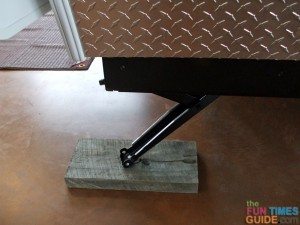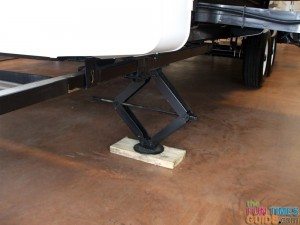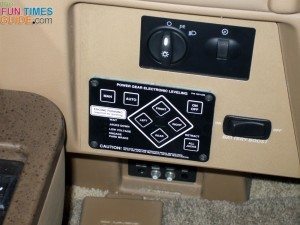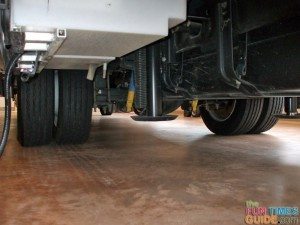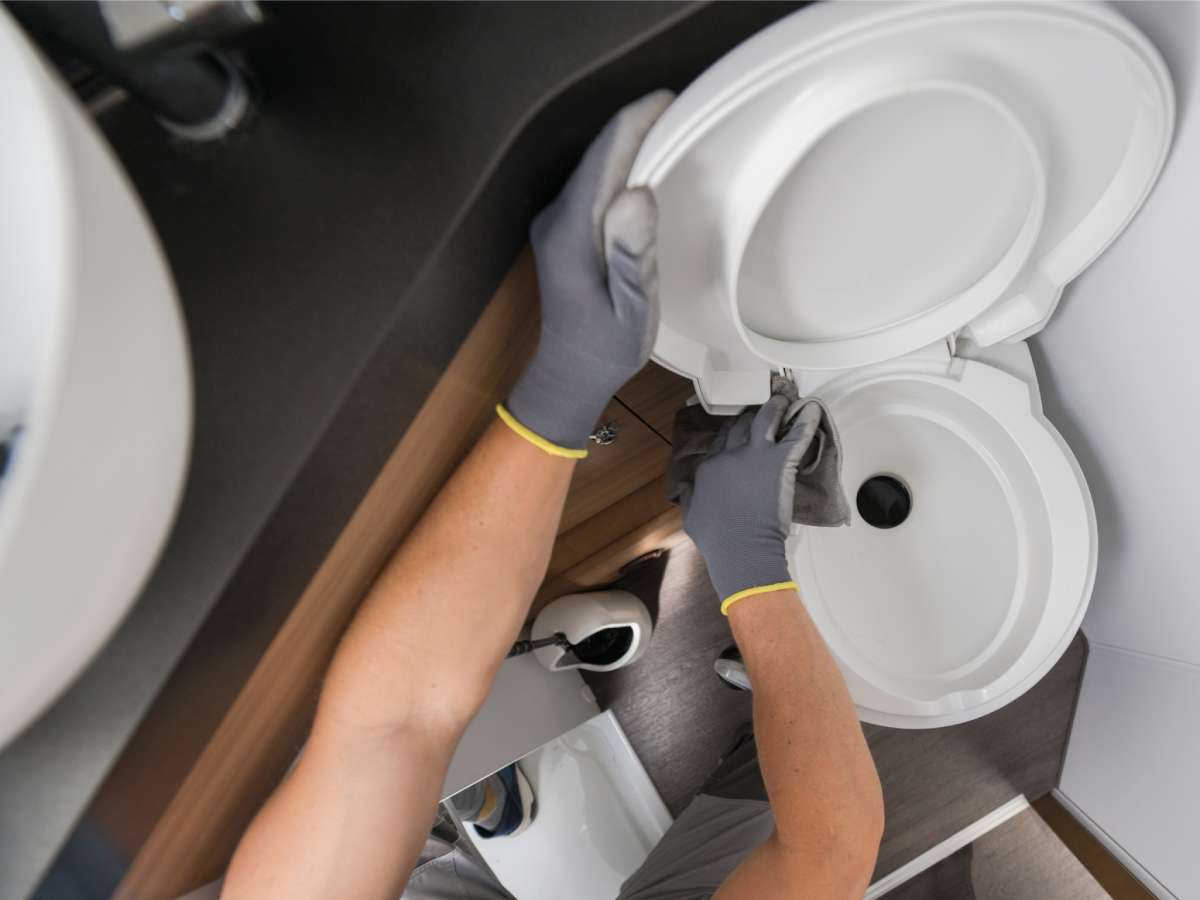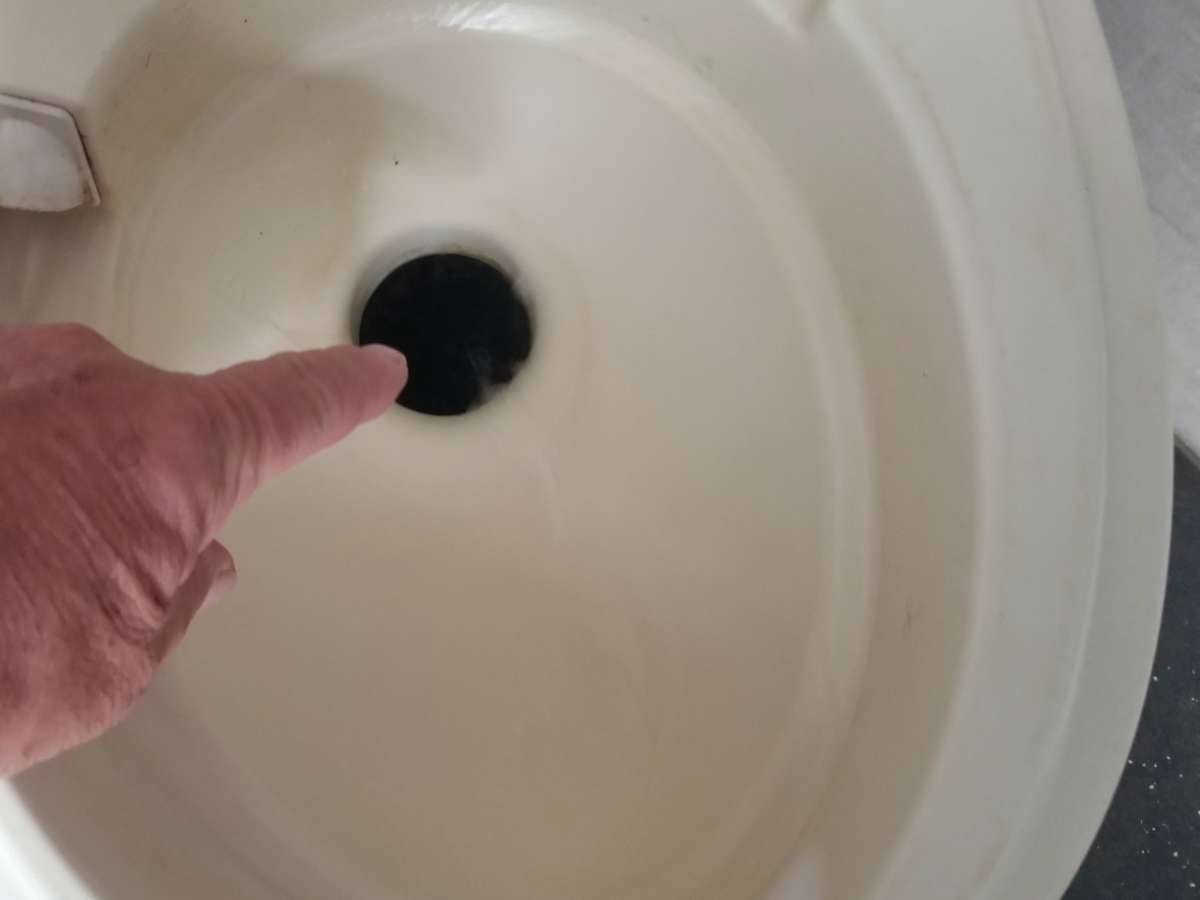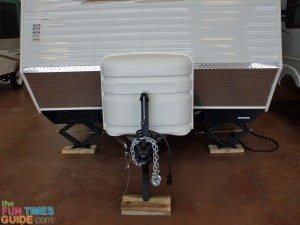 Every RV requires a leveling system for 2 reasons:
Every RV requires a leveling system for 2 reasons:
- To meet the requirements of the refrigerator. If it’s not level, it will not function very well.
- For the comfort of the occupants. Sleeping with your head in a downward slope can be uncomfortable. Likewise, rolling out of bed is a real possibility if you’re parked with one side higher than the other.
The key question for the new RVer is, “What type of leveling system do you have for your RV?”
Here’s what you need to know about RV leveling systems…
Simplest RV Leveling Option
Slide-in pickup campers, some soft-sided tent trailers, teardrop trailers, and other lightweight RVs aren’t likely to have factory-mounted RV leveling jacks of any sort.
Usually, 2×6 planks are used to accommodate the relatively minor adjustments required to level out such a unit.
As a precaution, at least one wheel that isn’t on a leveling plank should be blocked in order to prevent the RV from rolling off the leveling block.
Many RVers upgrade to a stackable set of plastic RV leveling blocks that are cleaner and much lighter in weight. Designed to snap together, you can build a ramp of sorts from your block kit to gain the proper height for leveling your RV.
RV Leveling Jacks
Most mid-sized RV trailers (travel trailers and 5th wheel trailers) come with stabilizer jacks attached at the corners of the RV. You crank them down by hand until you have some of the weight of the trailer applied to the jack.
NOTE: These jacks are only designed to level out an RV, not to lift the trailer off the ground as would be required to change a tire.
Stabilizer jacks require both care and maintenance. If you accidentally attempt to pull away while your RV is leveled with these jacks they will very easily fold over and be destroyed. They must be retracted completely, because even very light impact will tear them clean off your RV.
Crank-up jacks must be kept clean and greased. Hanging down below your RV, they will quickly collect dirt and grit when you travel on gravel roads. That will ultimately hamper the ability to turn the long threaded rod that makes the jack raise and lower.
A common accessory to assist in raising and lowering screw type jacks is a cordless electric drill. Used to quickly raise or lower the jack, a drill with a socket can save both time and effort!
Hydraulic RV Leveling Systems
Many motorhomes come equipped with hydraulic leveling systems.
With a group of 4 buttons near the driver’s seat, you can level up your RV in total comfort.
Even these seemingly foolproof RV leveling systems require some attention though. Maintenance is usually limited to making sure the hydraulic reservoir has sufficient fluid, but there are some concerns to be aware of when using hydraulic stabilizer jacks:
- Hydraulic jacks are much stronger than manual screw jacks. Using them together, you can easily raise the entire motorhome off the ground. This is very helpful when the time comes to change a tire — because crawling under a motorhome can be difficult with a flat tire.
- When using the hydraulic levelers, always lift either one complete side or one complete end of the RV. This will help you avoid twisting the unit which may cause damage to the structure.
- Where you use your hydraulic levelers is also a concern. A concrete surface is best, but blacktop can be used with caution. If ambient temperatures are high, you will likely create a depression in the blacktop with the weight of your motorhome concentrated on the relatively small pads of your leveling jacks.
- Attempting to use a hydraulic leveling system on a soft dirt surface will prove futile, as the jack will just sink into the ground. Be sure you have a solid footing when you use this type of RV leveling system.
Here are some small RV levels that adhere to the 4 corners of your RV and enable you to see how level your RV really is.
Here are some tips for leveling and stabilizing your RV.

